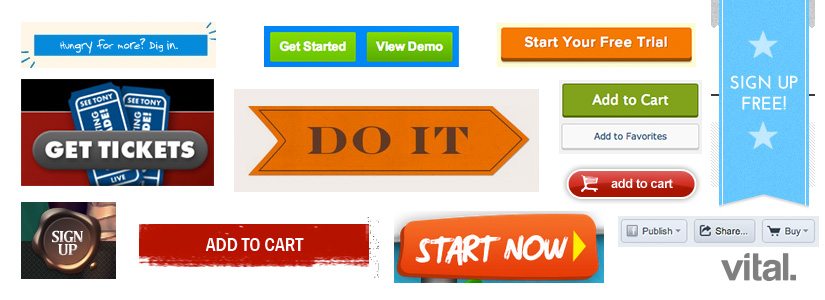Table of Content
No headings found.
Marketing websites, social media, brands, and creative agencies have come a long way since the early days of the internet. From basic HTML pages to dynamic, interactive platforms, the evolution has been remarkable.
Today, businesses rely heavily on their online presence, marketing website, social media, influencer marketing, and marketing automation to attract and engage customers. Today, businesses rely heavily on their online presence, marketing website, social media, influencer marketing, and marketing automation to attract and engage customers.
To succeed in today's competitive market, understanding how to effectively market websites, projects, clients, blog, and portfolio page is crucial. Whether it's optimizing for search engines, creating compelling content, or leveraging social media channels, a comprehensive marketing strategy is essential for driving traffic and generating leads.
Digital Marketing Trends
Design Essentials

To attract users, marketing websites should have a clean and modern design with consistent branding elements. A professional look can be achieved by incorporating intuitive layouts that enhance user engagement. Users are more likely to stay on a website that is visually appealing and easy to navigate.
Creating a seamless navigation experience is crucial for user satisfaction. Fast loading speeds help reduce bounce rates, ensuring visitors stay longer on the site. Clear content hierarchy makes information easily accessible, guiding users through the website effortlessly.
Pros:
- Clean and modern design attracts users
- Consistent branding elements create a professional look
- Intuitive layout enhances user engagement
Cons:
- Overly complex designs may confuse users
- Inconsistent branding can harm brand identity
User Experience

User interaction can be improved by adding engaging features like interactive elements and forms that encourage participation. Dynamic animations not only enhance visual appeal but also keep users interested in the content they are viewing.
Ensuring mobile-friendly designs is essential in today's digital landscape. Responsive layouts provide an optimal viewing experience on various devices, including smartphones and tablets. Thumb-friendly buttons make navigation easier on touchscreens, enhancing usability for mobile visitors to the page.
Steps to Improve User Experience:
- Add interactive features like quizzes or calculators.
- Optimize loading speed by compressing images and minifying code.
- Implement responsive design for mobile compatibility.
Key Information:
- Interactive forms encourage user participation.
- Dynamic animations enhance visual appeal.
Importance of SEO Content
Keyword Focus

When it comes to making sure your marketing website is easily found on search engines, using the right keywords strategically is super important. Keywords are like the secret code that helps search engines understand what your website is all about. So, when someone types a query into Google or Bing, and it matches the keywords on your site, voila! Your website pops up in the search results.
But here's the thing - not just any old keyword will do. You've got to do some detective work to figure out which keywords your target audience is using. This process is called keyword research, and it involves digging deep into what people are searching for online related to your business. Once you've got a list of those golden keywords, you can sprinkle them throughout your website content in a way that feels natural and helpful to your readers.
Now, let's talk about user intent. Imagine you're looking for a new pair of sneakers online. You type in "best running shoes for beginners" in the search bar. What are you expecting to find? Probably a list of top-rated running shoes that are perfect for someone just starting out, right? That's user intent - understanding what people are looking for when they type in a search query.
So, when you're optimizing your marketing website, think about what your target audience wants. What questions do they have? What problems are they trying to solve? By creating content that directly addresses these needs and concerns, you're not only boosting your chances of showing up in search results but also building trust with your audience. And when people trust you, they're more likely to stick around, engage with your content, and eventually convert into customers.
User Intent
- Strategic keyword placement enhances search engine visibility.
- Relevant keywords attract targeted traffic to marketing websites.
- Keyword research optimizes content for SEO purposes.
- Understanding user intent tailors content to meet audience needs.
- Anticipating user queries improves website relevance.
- Addressing user pain points boosts engagement and conversions.
Showcasing Brand Personality
Storytelling

Compelling storytelling on marketing websites goes beyond just providing information about products or services. It allows brands to connect with their audience on a deeper level by sharing the story behind the brand. By incorporating narratives into the website, brands can create an emotional connection with visitors, making them more likely to remember the brand and become loyal customers.
For example, sharing the challenges and triumphs of creating a product can humanize the brand and make it more relatable to consumers. Additionally, highlighting the values and mission of the company can attract like-minded individuals who align with those beliefs. Overall, storytelling is a powerful tool that can set a brand apart from its competitors and leave a lasting impression on website visitors.
Visual Identity
Visual elements play a crucial role in marketing websites to showcase brand personality effectively. Consistency in visual elements like logos, color schemes, and typography reinforces brand recognition. By maintaining a unique visual style that sets the website apart from competitors, brands can leave a lasting impression on visitors. Cohesive color schemes and thoughtful typography choices not only enhance aesthetics but also contribute to conveying the brand's message clearly.
Leveraging Multimedia
Video Content

Engaging video content is a powerful tool for marketing websites. It not only captures visitors' attention but also keeps them on the site longer, ultimately increasing engagement by enhancing page retention. Videos have a unique ability to convey information in a compelling and memorable way, making complex concepts easier to understand for viewers. For instance, tutorial videos can effectively demonstrate product features or services offered by a company.
Video testimonials are another valuable asset for marketing websites. They help build trust and credibility with potential customers by showcasing real experiences and positive feedback from satisfied clients. These testimonials humanize the brand, making it more relatable and trustworthy in the eyes of consumers.
Photography
High-quality images are essential for creating visually appealing websites. They not only capture visitors' attention but also make the website more engaging. When paired with relevant content, these images help reinforce messages and create a cohesive storytelling experience for users. For example, an e-commerce website selling clothing can benefit greatly from using high-resolution images to showcase products from various angles, providing customers with a clear view of what they are purchasing.
Professional photography takes the visual appeal of marketing websites to the next level. By presenting products or services in the best possible light, professional photos add authenticity and value to the brand's image. Whether it's highlighting the intricate details of handcrafted items or capturing breathtaking landscapes for travel agencies, professional photography plays a crucial role in elevating the overall look of a website.
Navigation and Usability
User-Friendly Navigation
![How To Make A User-Friendly Website [Expert Guide]](https://www.webdesignds.com/wp-content/uploads/2023/04/how-to-make-user-friendly-website-themeforest.jpg)
An essential aspect of marketing websites is user-friendly navigation. Websites with an intuitive menu structure simplify the browsing experience for visitors. Clear labels and categories play a crucial role in helping users quickly find the information they are looking for. For instance, if a website sells various products, having distinct categories like "Men's Clothing" or "Electronics" makes it easier for customers to navigate.
Breadcrumb navigation is another key feature that aids in backtracking within the website. Imagine you're on an e-commerce site exploring different types of shoes but want to go back to the main page - breadcrumbs can help you easily trace your steps back through categories like "Home > Men's Shoes > Sneakers."
Clear Calls to Action

Apart from seamless navigation, clear calls to action (CTAs) are vital for driving user engagement and conversions on marketing websites. Prominent and persuasive CTAs prompt visitors to take specific actions such as signing up for a newsletter or making a purchase. A well-crafted CTA can significantly impact conversion rates by guiding users towards desired outcomes.
Strategic placement of CTAs throughout a website is crucial as they act as signposts guiding users through the sales funnel. For example, placing a "Buy Now" button prominently on product pages or using phrases like "Sign Up Today!" can influence visitor behavior positively, leading them towards completing desired actions.
Color and Design
Color Palette
Color plays a crucial role in marketing websites. Thoughtfully chosen color schemes can evoke specific emotions and associations in visitors. For instance, using bright colors like red or yellow can create a sense of urgency or excitement, while softer tones like blue or green may convey calmness and trust. Harmonious color combinations on a website not only enhance its visual appeal but also contribute to the overall user experience.
Consistency in utilizing brand colors is essential for reinforcing brand identity. When users encounter familiar colors associated with a brand across different web pages, they are more likely to recognize and remember the brand. This recognition builds trust and loyalty among visitors as they navigate through the site.
Design Consistency
Apart from color, design elements also play a significant role in marketing websites. Consistent design elements maintained across various pages help create a cohesive user experience. Imagine visiting a website where each page has different fonts, layouts, and styles; it would feel disjointed and confusing for users trying to find their way around the site.
Uniform typography throughout the website ensures visual harmony by providing coherence between text elements on different pages. Consistent branding elements such as logos, icons, and imagery foster trust among users by presenting a unified image of the company or brand they are interacting with online.
Social Proof and Trust
Testimonials

Positive testimonials play a crucial role in establishing credibility and trust among potential customers. When visitors see authentic customer reviews on your website, it significantly influences their purchase decisions. By prominently displaying these testimonials, you can highlight the satisfaction of previous clients effectively. Customers often seek reassurance from the experiences of others before making a buying decision.
Pros:
- Build credibility
- Influence purchase decisions
- Highlight customer satisfaction
Cons:
- Risk of fake testimonials
Detailed case studies serve as powerful tools to showcase successful projects or client experiences. They provide an opportunity to demonstrate your expertise in handling various challenges and delivering results for clients. Potential customers find value in reading case studies as they offer insights into problem-solving approaches and the tangible outcomes achieved by working with your company.
- Share detailed project information.
- Highlight challenges faced.
- Showcase solutions provided.
- Present measurable results achieved.
By sharing real-life examples through case studies, you can build trust with potential clients by illustrating how your services have positively impacted others' businesses.
Key Information:
- Showcases expertise
- Provides valuable insights
Displaying social proof through both testimonials and case studies is essential for marketing websites to establish trustworthiness and credibility among visitors seeking products or services online.
Best Practices for Marketing Websites
Prioritization of UX
Placing user needs at the forefront is crucial for successful marketing websites. By adopting a user-centric design, businesses can enhance overall website performance significantly. This approach not only boosts customer satisfaction and loyalty but also leads to higher conversion rates. For instance, when an e-commerce site simplifies the checkout process, it improves user experience and encourages more purchases.
Focusing on essential components such as contact forms and an about us page is vital for effective marketing websites. These elements enhance website functionality by providing users with necessary information easily accessible on the site. Moreover, incorporating social sharing buttons allows visitors to share valuable content effortlessly across various platforms, increasing engagement and driving traffic back to the site. Implementing robust security features ensures that user data remains protected from cyber threats.
Top Digital Marketing Websites of 2024
Ranking Criteria
To excel in the digital realm, marketing websites must prioritize optimizing speed. A swift website enhances user experience and boosts search engine rankings. Mobile-friendliness is paramount as Google's algorithm favors responsive sites, ensuring they rank higher in search results. Quality backlinks from reputable websites are crucial for improving a site's visibility online.
Creating a list of pros and cons can help you understand the impact of each ranking criterion:
- Pros: Higher search engine rankings, improved user experience
- Cons: Time-consuming optimization process
Analyzing successful marketing websites provides invaluable insights into effective strategies. By dissecting these sites, one can uncover innovative design elements and marketing tactics that contribute to their success. Drawing inspiration from industry leaders sets a benchmark for excellence in web design and marketing strategies.
Inspiration Examples
Examining inspirational examples ignites creativity in web design by showcasing cutting-edge trends and unique features that captivate visitors' attention instantly. Implementing similar elements on your website can enhance its visual appeal and engagement levels.
Here are some key information items to consider when seeking inspiration:
- Analyze successful websites for effective strategies.
- Incorporate innovative design elements to stand out.
- Set benchmarks by studying industry leaders' approaches.
Studying exemplary marketing websites serves as a guidepost for those looking to elevate their digital presence through strategic designs and impactful content creation techniques.
Statistics for Marketing Websites
According to a recent study by Statista, global spending on digital marketing is expected to reach $389 billion in 2021, showcasing the growing importance of online advertising for businesses. This statistic highlights the significant investment companies are making in their marketing efforts to reach and engage with their target audience effectively.
Additionally, a report by HubSpot revealed that businesses that prioritize blogging efforts are 13 times more likely to see a positive return on investment (ROI) compared to those that don't. This statistic underscores the value of content marketing for driving traffic, generating leads, and ultimately converting visitors into customers on marketing websites.
Summary
You've now explored the dynamic world of marketing websites, delving into trends, content strategies, design elements, and best practices that can elevate your online presence. By understanding the significance of SEO content, brand personality, multimedia integration, user-friendly navigation, compelling design, and social proof, you're equipped to create a website that captivates and converts visitors. Remember, each element plays a crucial role in building trust and engagement with your audience.
As you embark on enhancing your website or creating a new one, keep these insights in mind. Strive for a harmonious blend of creativity and functionality to leave a lasting impression on your visitors. Your website is not just a digital space but a reflection of your brand's identity and values. So go ahead, apply these tips, and watch your online presence soar!
Frequently Asked Questions
What are the key elements to consider when designing a marketing website?
When designing a marketing website, it's crucial to focus on aspects like navigation, usability, color schemes, showcasing brand personality, leveraging multimedia content effectively, incorporating social proof for trust-building, and ensuring SEO-optimized content.
How can multimedia be leveraged effectively on a marketing website?
Multimedia such as videos, images, and infographics can enhance user engagement by providing visual appeal and conveying information more dynamically. Use multimedia strategically to showcase products/services creatively and tell compelling brand stories that resonate with your audience.
Why is SEO content important for a marketing website?
SEO-optimized content helps improve the visibility of your website in search engine results pages (SERPs), driving organic traffic and attracting potential customers. By incorporating relevant keywords naturally into your content, you increase the chances of ranking higher in search results.
How does showcasing brand personality impact the success of a marketing website?
Showcasing brand personality humanizes your business and helps build emotional connections with your audience. When visitors resonate with your brand values and identity through authentic storytelling on your website, they are more likely to engage with your offerings and become loyal customers.
What role does social proof play in establishing trust on a marketing website?
Social proof—such as customer testimonials, reviews, case studies—builds credibility by demonstrating that others have had positive experiences with your products or services. It reassures visitors about the quality and reliability of what you offer, fostering trust and encouraging conversions.
Free Press Release Template
Tell us where to send your PDF:







